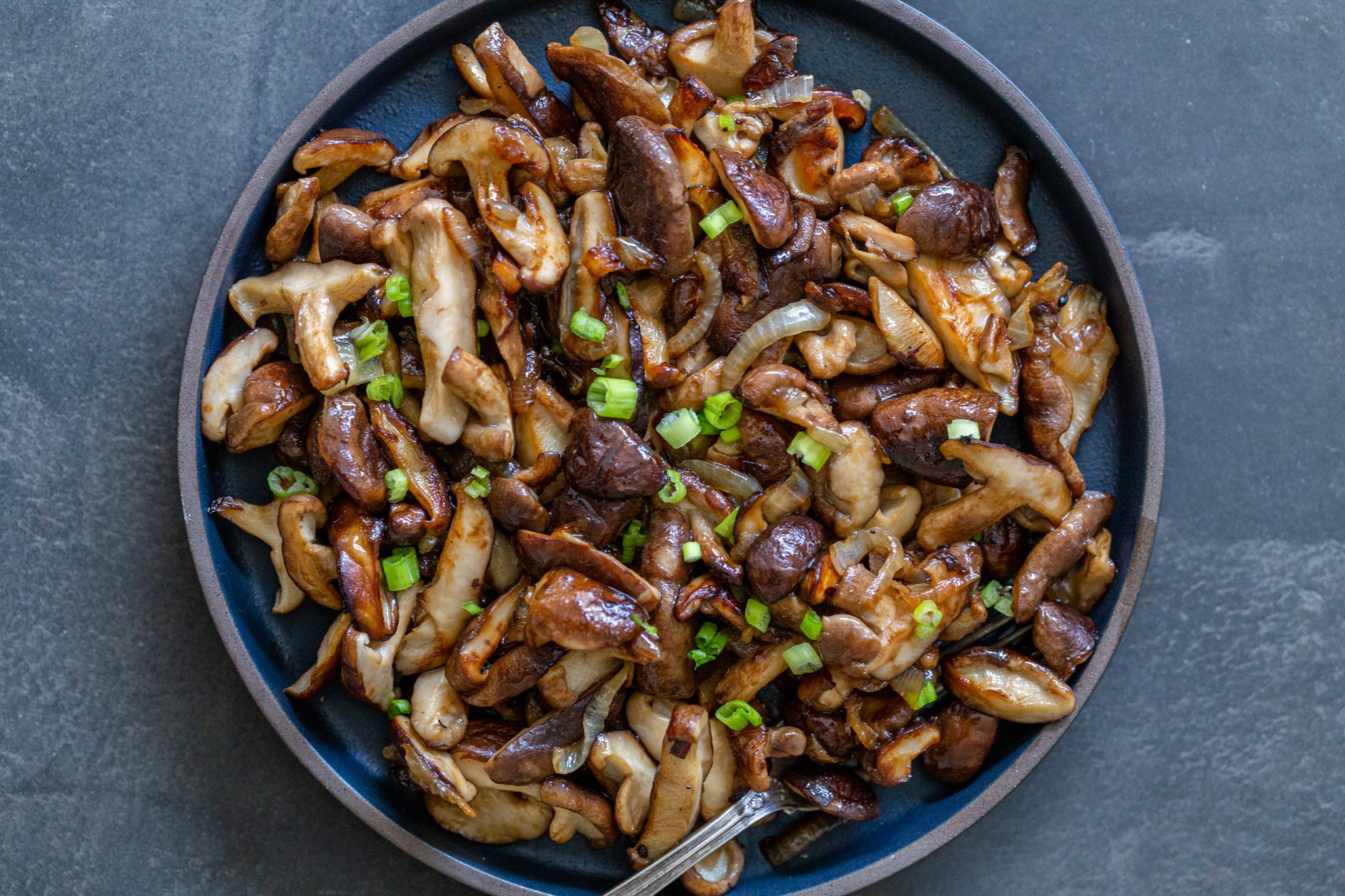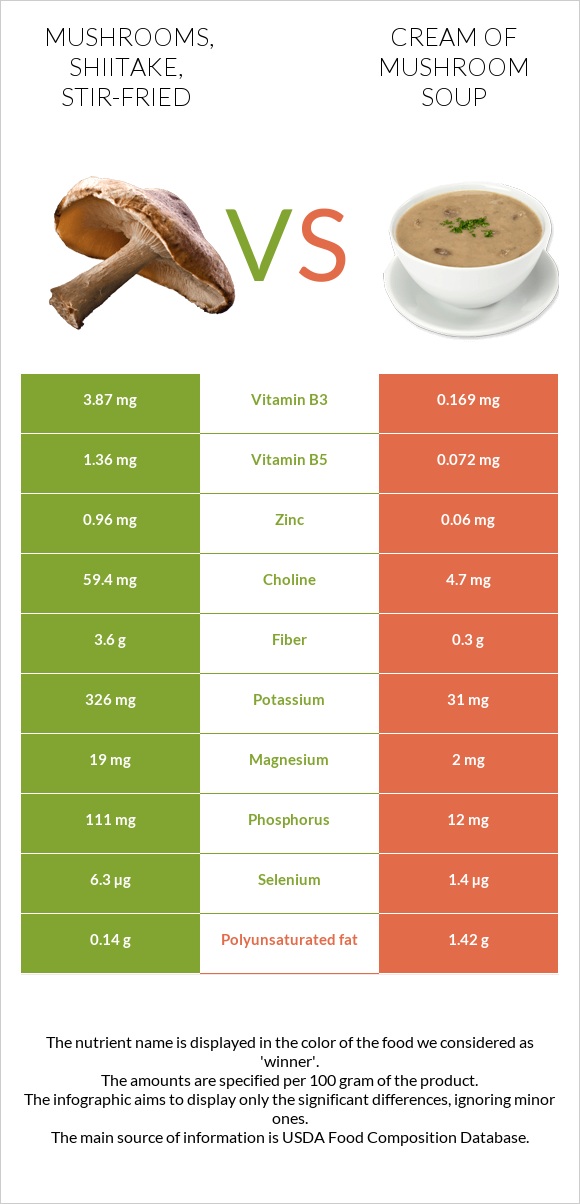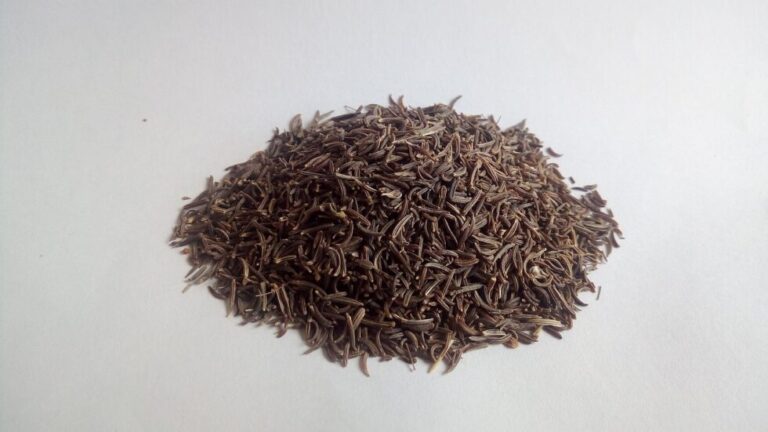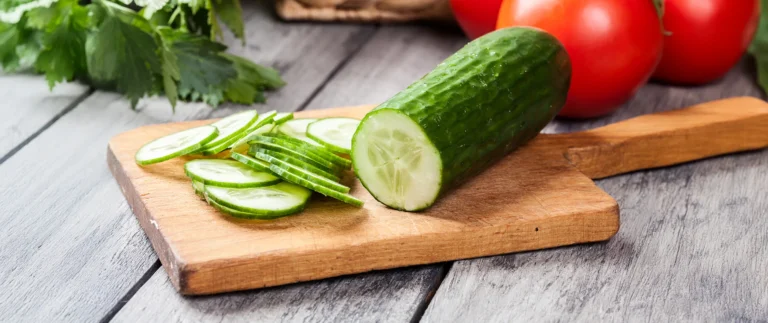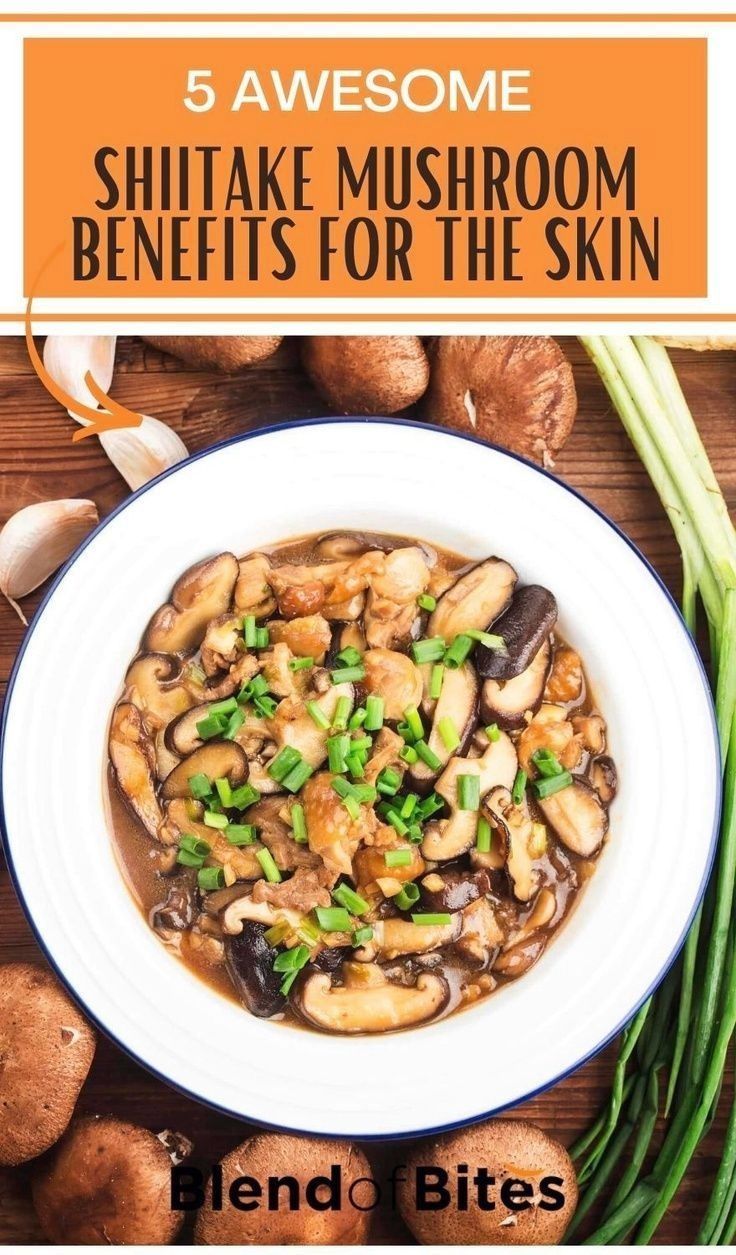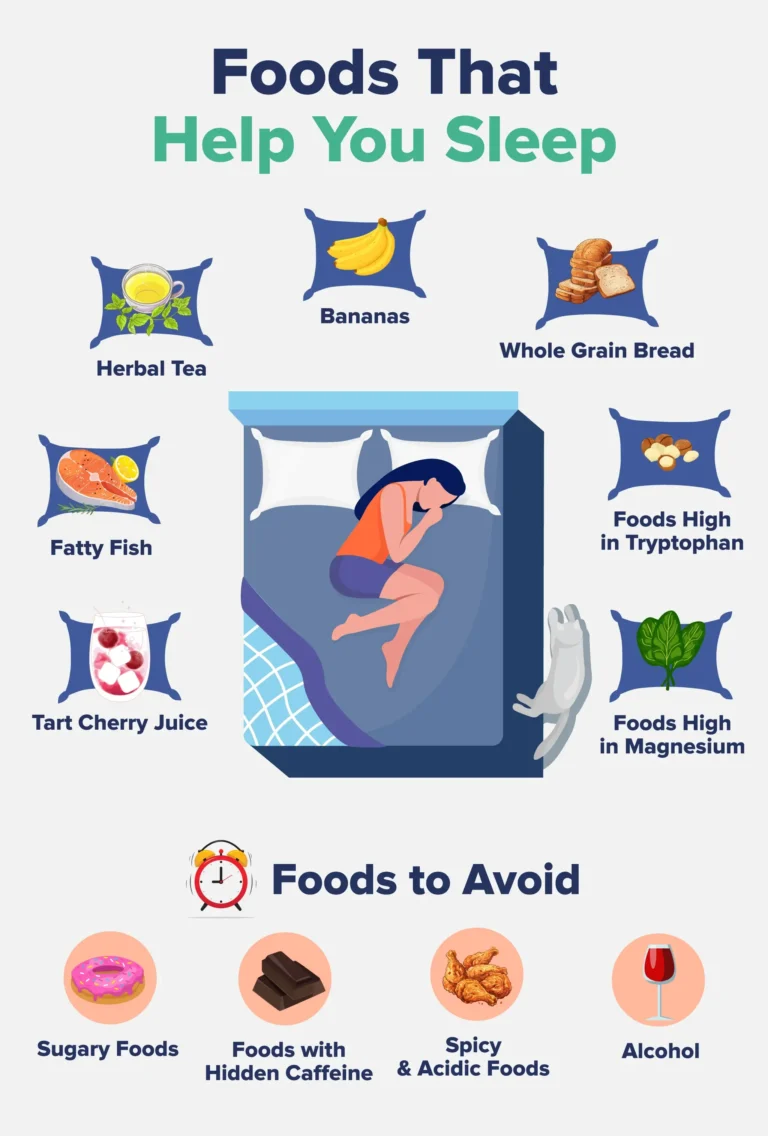From Soup to Stir-Fry: Maximizing the Nutritional Value of Shiitake
The forest floor, a realm of silent alchemy, holds secrets whispered through mycelial networks and brought to fruition in the form of the humble mushroom. Among these, Lentinula edodes, more commonly known as the shiitake, stands as a testament to nature’s profound ability to craft both culinary delight and potent medicine. For centuries, across the verdant landscapes of East Asia, this unassuming fungi has been revered not just for its rich, umami-laden flavor but for a spectrum of health-promoting properties that have intrigued herbalists, chefs, and scientists alike. Yet, as with many of nature’s gifts, the true art lies not merely in consumption, but in understanding how to unlock and maximize the full potential held within its fibrous cap and stem. This is a story of discovery, of ancient wisdom meeting modern science, and a culinary journey from the subtle extraction of a nourishing soup to the vibrant, nutrient-dense embrace of a stir-fry, all designed to reveal the shiitake’s deepest nutritional lexicon.
Our narrative begins not in a laboratory, but in the dappled light of an ancient forest, where the shiitake first took root on decaying hardwood. Its history is intertwined with human civilization, a silent companion cultivated as early as 1000 AD in China. Early texts, such as those from the Ming Dynasty, extolled its virtues for boosting qi, improving circulation, and even warding off respiratory ailments. This wasn’t mere folklore; it was the genesis of a scientific quest, a slow unravelling of the complex tapestry of compounds that make the shiitake a nutritional powerhouse. For the knowledgeable audience, the journey into maximizing its value demands a deep dive into its unique biochemistry, the subtle interplay of cultivation practices, and the transformative power of culinary techniques.
The Shiitake’s Biodynamic Blueprint: A Symphony of Compounds
To truly maximize the shiitake’s nutritional value, we must first understand what we are aiming to optimize. Beyond its pleasing texture and savory taste, the shiitake is a veritable treasure trove of macro and micronutrients, alongside a remarkable array of bioactive compounds that underpin its medicinal reputation.
Macronutrients: Shiitake mushrooms are surprisingly robust for a fungi. They offer a good source of plant-based protein, providing essential amino acids, making them a valuable component in vegetarian and vegan diets. Their fiber content is significant, contributing to digestive health and satiety. This fiber isn’t just inert bulk; it often functions as a prebiotic, nourishing beneficial gut bacteria and thus indirectly enhancing nutrient absorption and immune function.
Micronutrients: The shiitake is a rich source of B vitamins, particularly riboflavin (B2), niacin (B3), pantothenic acid (B5), and B6. These are crucial cofactors in countless metabolic processes, from energy production to DNA synthesis. It also boasts an impressive mineral profile, including selenium, copper, zinc, and manganese – trace elements vital for antioxidant defense, immune function, and enzymatic activity throughout the body.
The Stars: Bioactive Compounds: This is where the shiitake truly shines, transcending mere nutrition to enter the realm of functional food.
-
Lentinan: Perhaps the most celebrated compound, lentinan is a β-glucan polysaccharide. Its primary claim to fame lies in its potent immunomodulatory effects. Unlike direct immune stimulants, lentinan operates by enhancing the host’s own immune response, activating macrophages, T-lymphocytes, and natural killer cells. It does this by binding to specific receptors on immune cells, initiating a cascade of signaling pathways that bolster the body’s defenses against pathogens and even abnormal cell growth. Its role in cancer research, particularly as an adjuvant therapy, is well-documented, demonstrating its ability to improve quality of life and potentially prolong survival in certain patient groups. Understanding lentinan’s water-soluble nature is critical for its extraction.
-
Eritadenine: This fascinating amino acid derivative is responsible for much of the shiitake’s reputation as a cholesterol-lowering agent. Research indicates that eritadenine can inhibit the activity of an enzyme called S-adenosylmethionine decarboxylase, which is involved in the synthesis of polyamines, compounds that play a role in cholesterol metabolism. More directly, eritadenine has been shown to accelerate the excretion of cholesterol from the body and to modulate lipid profiles, reducing circulating levels of total cholesterol and LDL ("bad") cholesterol. This makes the shiitake a valuable ally in cardiovascular health.
-
Ergosterol and Vitamin D: This is arguably the most dynamic and controllable aspect of shiitake nutrition. Ergosterol, a provitamin D2 found abundantly in mushrooms, transforms into ergocalciferol (Vitamin D2) when exposed to ultraviolet (UV) light. This conversion is akin to a hidden alchemical reaction, making shiitake a rare plant-based source of Vitamin D, a nutrient critical for bone health, immune function, mood regulation, and numerous other physiological processes. The power to significantly boost this nutrient through simple household practices is a cornerstone of maximizing shiitake’s value.
-
Phenolic Compounds and Antioxidants: Shiitake contains various phenolic compounds, including gallic acid, protocatechuic acid, and ferulic acid, alongside flavonoids. These are potent antioxidants that combat oxidative stress by neutralizing free radicals, thereby protecting cells from damage and reducing the risk of chronic diseases. Their collective action contributes to the mushroom’s anti-inflammatory and protective effects.
Armed with this knowledge, we can now embark on the journey of maximization, recognizing that the potential lies not just in the mushroom itself, but in how we interact with it.
Cultivation and Pre-Preparation: Laying the Groundwork for Potency
The story of shiitake’s nutritional journey begins long before it reaches our kitchen. The conditions under which it is grown and its initial handling significantly impact its final composition.
1. Substrate Matters: The traditional method of growing shiitake on hardwood logs (oak, beech, maple) is not merely an aesthetic choice. The composition of the substrate influences the mushroom’s mineral uptake and the synthesis of certain compounds. Hardwood logs provide a complex array of nutrients and trace elements that can be incorporated into the fungal fruiting body. While synthetic substrates (sawdust blocks) are more common for commercial production, variations in their composition (e.g., supplementation with bran or other agricultural byproducts) can also subtly alter the nutritional profile. Knowledgeable consumers might seek out shiitake grown on specific hardwood logs for a potentially richer mineral profile, although the difference might be marginal compared to other factors.
2. Environmental Controls: Temperature, humidity, and light exposure during cultivation play crucial roles in the mushroom’s development and its biochemical makeup. For instance, the optimal temperature range for fruiting body formation influences the rate of synthesis of various polysaccharides. However, the most profound pre-preparation step relates to light.
3. The Sun-Drying Revelation: Activating Vitamin D: This is perhaps the most impactful and easily implementable strategy for maximizing shiitake’s nutritional value. Fresh shiitake contains ergosterol, but very little active Vitamin D2. The magic happens when these mushrooms are exposed to UV radiation. Just 15-30 minutes of direct sunlight (ideally midday sun, between 10 AM and 3 PM) can dramatically increase their Vitamin D2 content by many multiples – some studies report increases of up to 10-fold or more.
- The Process: Simply slice fresh shiitake (to expose more surface area) and place them gill-side up on a tray or rack in direct sunlight. Even indirect sun on a windowsill can offer some benefit, though direct exposure is more effective.
- Storage: Once sun-dried, these mushrooms can be stored in an airtight container for several months, retaining their boosted Vitamin D content. This technique transforms a modest source into a significant contributor to Vitamin D intake, especially valuable for those seeking plant-based options or living in regions with limited sun exposure. This silent alchemist, the sun, transforms the mushroom from a mere food into a potent nutraceutical.
4. Rehydration Techniques: Dried shiitake are a staple in many pantries, prized for their concentrated flavor and extended shelf life. The rehydration process is not just about softening them; it’s about preparing them for optimal nutrient extraction and flavor development.
- Cold vs. Hot Water: While hot water speeds up rehydration, cold water soaking (for several hours or overnight) is often recommended for superior flavor and texture. More importantly, cold water can also help preserve certain heat-sensitive compounds and allows for a more gradual release of flavor compounds.
- The Soaking Liquid: Crucially, do not discard the soaking liquid! This dark, aromatic broth is a concentrated essence of water-soluble nutrients, including lentinan, B vitamins, and flavor compounds like guanylate. It should be filtered and incorporated into soups, sauces, or stir-fries, ensuring that no valuable nutrients are lost. This liquid is the foundational elixir of our soup.
Culinary Alchemy: The Art of Nutrient Extraction and Preservation
Once prepared, the shiitake enters the kitchen, where culinary techniques become tools for nutrient maximization. The goal is a delicate balance: breaking down cell walls to improve bioavailability, extracting water-soluble compounds, and preserving heat-sensitive nutrients, all while enhancing flavor.
1. The Umami Factor: A Gateway to Nutrition: Shiitake is renowned for its rich umami flavor, largely due to the presence of L-glutamate and guanylate. Guanylate, in particular, has a synergistic effect with glutamate, intensifying the savory perception. This isn’t just a taste sensation; umami compounds can stimulate saliva production and gastric secretions, potentially aiding digestion and nutrient absorption. Cooking methods that concentrate flavor often also enhance the bioavailability of certain nutrients.
2. Temperature and Time: A Delicate Balance: Different nutrients react differently to heat.
- Heat-Sensitive Nutrients: B vitamins (especially thiamine, B1, though less prevalent in shiitake) and some antioxidants can be degraded by prolonged high heat.
- Heat-Resistant/Enhanced Nutrients: Lentinan, being a polysaccharide, is relatively stable. Some compounds may even become more bioavailable as heat breaks down tough cell walls, releasing their contents. For instance, the general breakdown of fungal chitin can improve digestibility.
3. Cooking Methods and Their Impact:
-
Soups and Broths (The Elixir Story): This is arguably the most effective method for extracting water-soluble compounds like lentinan, B vitamins, and minerals.
- Technique: Simmering dried or fresh shiitake (along with their soaking liquid, if using dried) for an extended period (30 minutes to an hour or more) in a gentle broth allows for a thorough infusion of nutrients. The low, slow heat ensures minimal degradation of heat-sensitive compounds while maximizing extraction.
- Maximization: The resulting broth becomes a concentrated nutritional elixir, easily digestible and rich in immune-boosting polysaccharides and B vitamins. This is the heart of the "soup" aspect of our journey.
- Application: Use as a base for ramen, pho, miso soup, or simply as a nourishing tonic.
-
Sautéing and Stir-Frying (The Vibrant Story): These quick, high-heat methods are excellent for preserving texture, developing rich flavors, and retaining certain nutrients.
- Technique: Sautéing shiitake in a healthy fat (like olive oil or avocado oil) for a short duration (5-7 minutes) until golden brown and slightly tender-crisp.
- Maximization: This method is ideal for retaining the integrity of the mushroom’s structure, which can contribute to satiety. When combined with other vegetables, it becomes a diverse nutrient powerhouse. The fat used in sautéing can also aid in the absorption of fat-soluble vitamins (like the sun-activated Vitamin D2).
- Application: Ideal for vegetable stir-fries, mushroom "bacon," or as a flavorful addition to grain bowls and omelets.
-
Roasting: Roasting shiitake at moderate to high temperatures (e.g., 375-400°F or 190-200°C) concentrates their flavor and creates a satisfyingly meaty texture.
- Maximization: While some water-soluble vitamins might be lost through evaporation, the intense heat can break down cell walls, potentially making some compounds more accessible. The Maillard reaction occurring during roasting also develops complex flavor compounds.
- Application: Roasted shiitake can be a stand-alone side dish, added to salads, or used as a plant-based alternative to meat in various recipes.
-
Steaming: Steaming is a gentle cooking method that minimizes nutrient loss due to high heat or leaching into cooking water.
- Maximization: This method is excellent for preserving heat-sensitive vitamins and antioxidants. The mushrooms retain their natural moisture and a delicate texture.
- Application: Steamed shiitake can be added to Asian-inspired dishes, dim sum, or simply enjoyed with a light dressing.
Synergy and Bioavailability: The Power of Combination
Beyond individual preparation methods, the true mastery of maximizing shiitake’s nutritional value lies in understanding how it interacts with other foods. The concept of dietary synergy suggests that the combined effect of nutrients and bioactive compounds from whole foods is greater than the sum of their isolated parts.
1. Pairing for Absorption:
- Healthy Fats for Vitamin D: If you’ve sun-activated your shiitake, pairing them with healthy fats (e.g., olive oil, avocado, nuts, seeds) in a stir-fry or salad will enhance the absorption of the fat-soluble Vitamin D2.
- Vitamin C for Iron: While shiitake contains some non-heme iron, its absorption can be improved by pairing it with Vitamin C-rich foods like bell peppers, broccoli, or citrus fruits. This is particularly relevant for vegetarians and vegans.
- Other Prebiotics for Gut Health: Combining shiitake with other prebiotic fibers (e.g., onions, garlic, leeks, asparagus) can further support a healthy gut microbiome, which in turn optimizes overall nutrient absorption and immune function.
2. Complementary Proteins: While shiitake offers a good protein profile, combining it with other plant-based proteins like legumes (beans, lentils) or whole grains (quinoa, brown rice) creates a complete amino acid spectrum, essential for muscle repair, enzyme function, and overall cellular health. A shiitake and lentil stew, for instance, offers a powerful nutritional punch.
3. The Nutrient Matrix: The shiitake, like all whole foods, provides a complex matrix of nutrients that work synergistically. Lentinan’s immune-boosting effects are likely supported by the mushroom’s array of B vitamins, minerals, and antioxidants. Eritadenine’s cholesterol-lowering properties are part of a broader anti-inflammatory and protective profile. Consuming the whole mushroom, rather than isolated supplements, ensures we benefit from this intricate web of interactions.
Practical Applications and Culinary Narratives
Let’s bring these principles to life through two distinct culinary narratives: the nurturing soup and the vibrant stir-fry.
The Nurturing Soup: A Story of Extraction and Comfort
Imagine a cold, damp evening. The goal is warmth, comfort, and deep nourishment. This is where the shiitake soup truly shines. The story begins with dried, sun-activated shiitake, lovingly rehydrated in cold water overnight. The dark, earthy soaking liquid, now an amber elixir, is carefully reserved. This forms the backbone of a clear broth, perhaps with a base of kombu and ginger. The rehydrated shiitake, sliced thinly, are added along with other water-soluble vegetables like carrots, celery, and a medley of leafy greens. A gentle simmer for 45 minutes to an hour allows the lentinan, B vitamins, and minerals to leach into the broth, creating a highly bioavailable, immune-supportive tonic. A dash of miso paste at the end introduces beneficial probiotics, further enhancing gut health. The resulting soup isn’t just food; it’s a hug in a bowl, a testament to the slow extraction of nature’s goodness.
The Vibrant Stir-Fry: A Story of Preservation and Synergy
Now, picture a quick, weeknight meal, demanding energy and vitality. The stir-fry becomes our canvas. Fresh shiitake, perhaps given a brief sunbath earlier in the day for a Vitamin D boost, are quickly sliced. A hot wok, a swirl of avocado oil, and the sizzle begins. The shiitake are added first, along with minced garlic and ginger, swiftly sautéed until golden and slightly crisp. Then come the complementary players: vibrant bell peppers (Vitamin C for iron absorption), crisp snap peas, and perhaps some firm tofu (complementary protein). A splash of tamari and a drizzle of sesame oil finish the dish. The quick cooking time preserves the crunch of the vegetables and minimizes the loss of heat-sensitive compounds. The healthy fats in the oil aid Vitamin D absorption. This stir-fry is a dynamic interplay of textures and flavors, a symphony of nutrients working in concert to invigorate the body.
Beyond these two archetypal preparations, the principles can be applied to countless dishes:
- Shiitake "Bacon": Thinly sliced shiitake, tossed with smoked paprika and tamari, then baked until crispy, offering a savory, umami-rich topping high in concentrated flavor.
- Duxelles: Finely minced shiitake, sautéed until dry and deeply flavorful, a versatile paste that can be incorporated into stuffings, sauces, or pâtés, maximizing flavor and nutrient density.
- Infused Oils: Dried shiitake can be infused into olive oil to create a flavorful cooking oil, imparting some fat-soluble compounds and the characteristic umami essence.
Considerations and Future Directions
While shiitake is a nutritional marvel, a knowledgeable audience understands the importance of nuance and potential caveats.
- Allergies and Sensitivities: A rare condition known as "shiitake dermatitis" can occur in some individuals, characterized by a rash appearing after consuming raw or undercooked shiitake. Proper cooking generally mitigates this risk.
- Quality Sourcing: As with any food, the quality of the shiitake matters. Opt for organic whenever possible, and choose reputable growers or suppliers to ensure freedom from pesticides and contaminants.
- Sustainability: Supporting sustainable cultivation practices ensures the longevity of this incredible fungi and its ecological balance.
- Emerging Research: The scientific exploration of shiitake is ongoing. New compounds, new mechanisms of action, and new therapeutic applications are constantly being discovered, promising even deeper insights into its potential. The story of shiitake is far from over.
Conclusion: Embracing the Shiitake
From the ancient forests to our modern kitchens, the shiitake mushroom embarks on a remarkable journey. It is a silent alchemist, transforming simple wood into a complex tapestry of nutrients, a testament to nature’s profound wisdom. Maximizing its nutritional value is not a rigid set of rules, but a conscious embrace of its unique biology and a thoughtful application of culinary artistry.
By understanding the power of sun-activation for Vitamin D, by honoring the extraction potential of a slow-simmered soup, by preserving vitality in a quick stir-fry, and by recognizing the synergistic dance of nutrients with other foods, we move beyond mere consumption. We engage in a deeper dialogue with our food, unlocking the full spectrum of health benefits this extraordinary fungi offers. The shiitake invites us to not just eat, but to truly experience its legacy – a journey from soup to stir-fry, from ancient wisdom to modern wellness, maximizing every fiber of its profound nutritional story. It teaches us that sometimes, the greatest treasures are found not in exotic ingredients, but in the intelligent appreciation and thoughtful preparation of the humble gifts that nature so generously provides.
